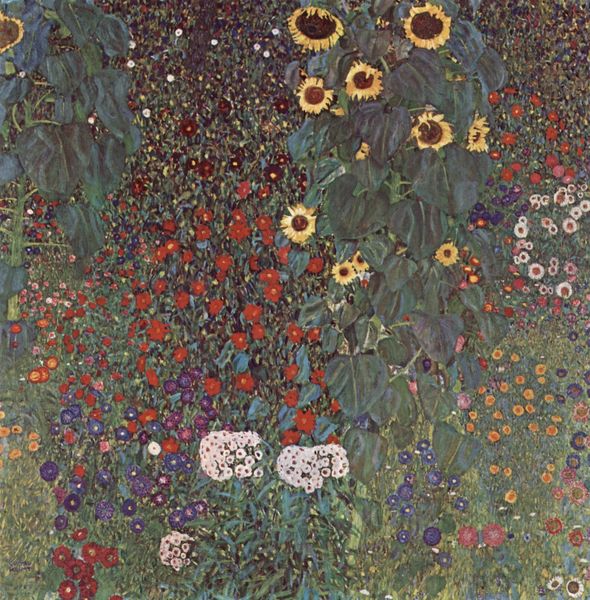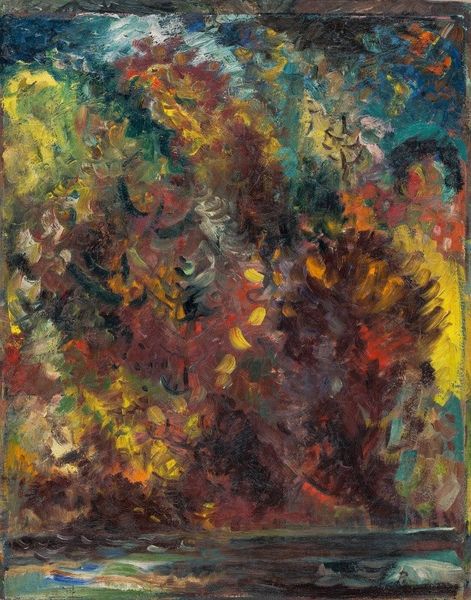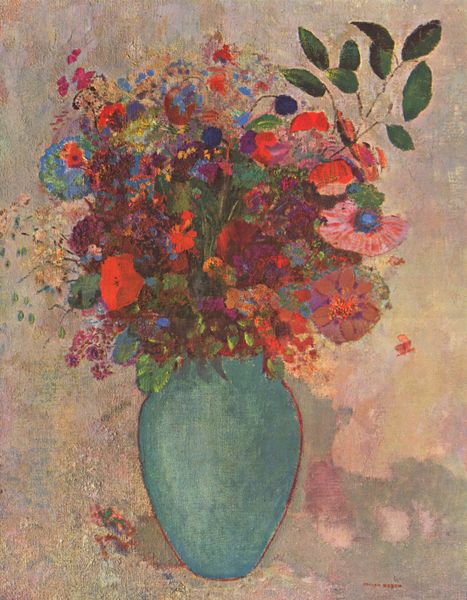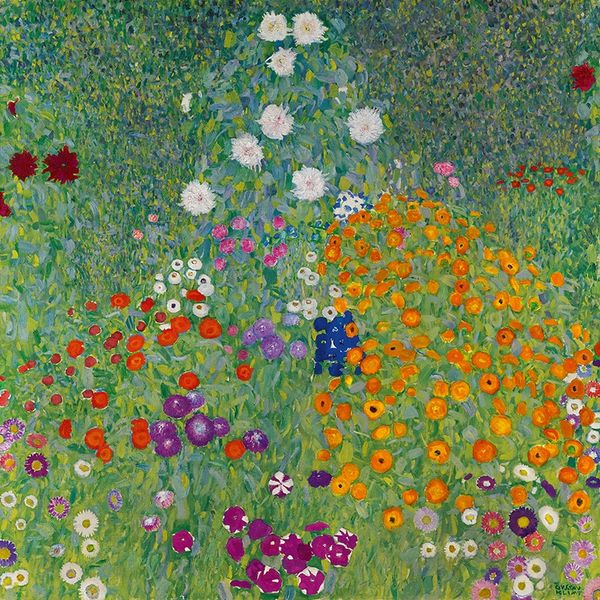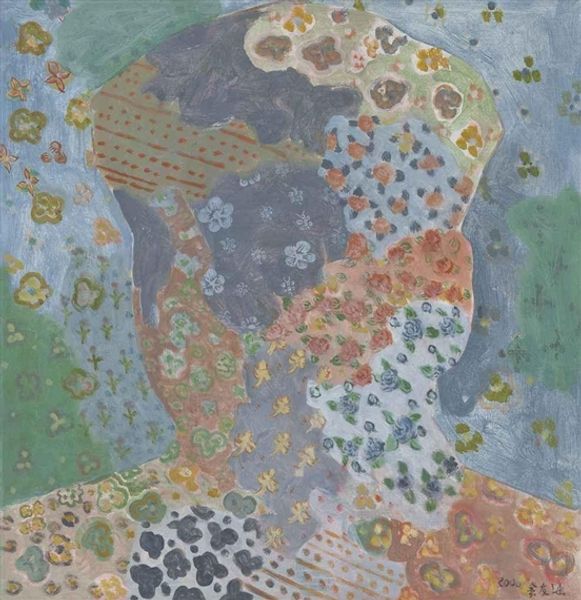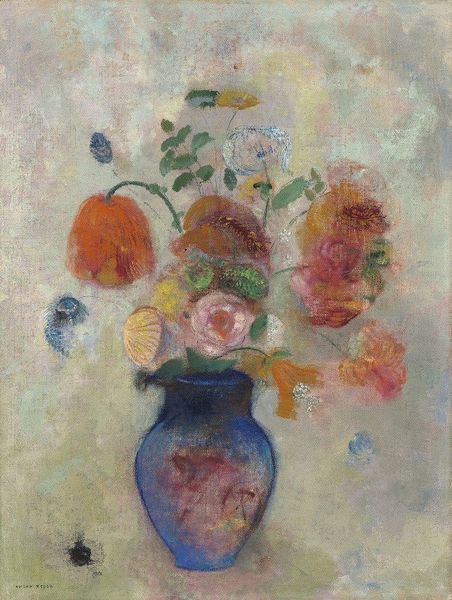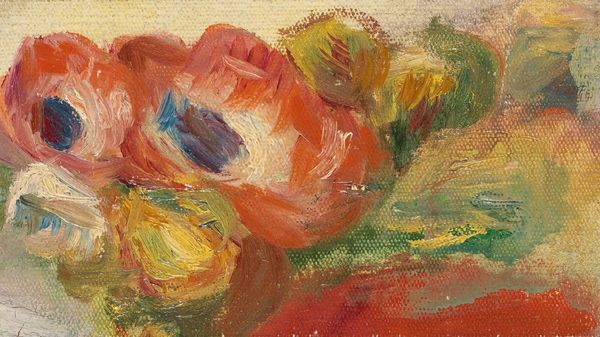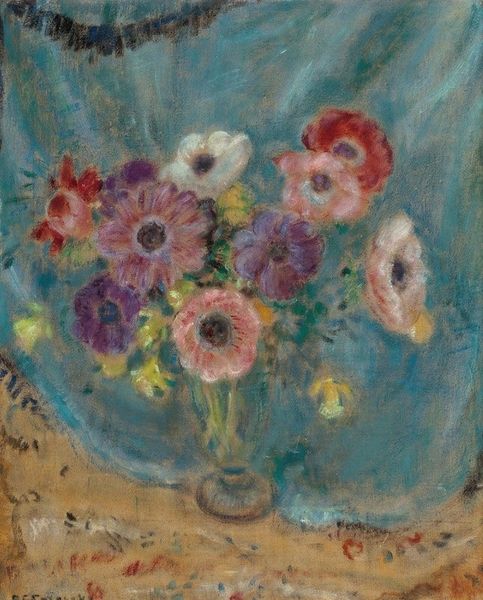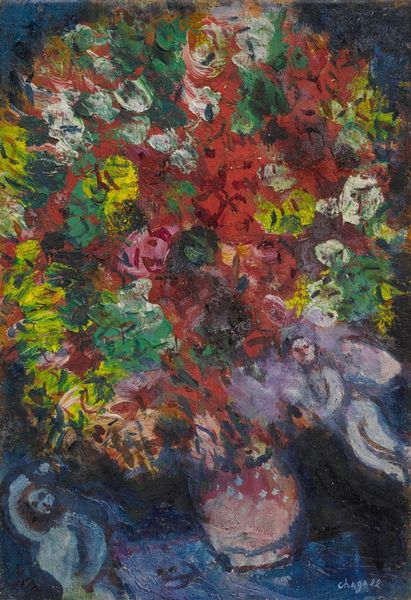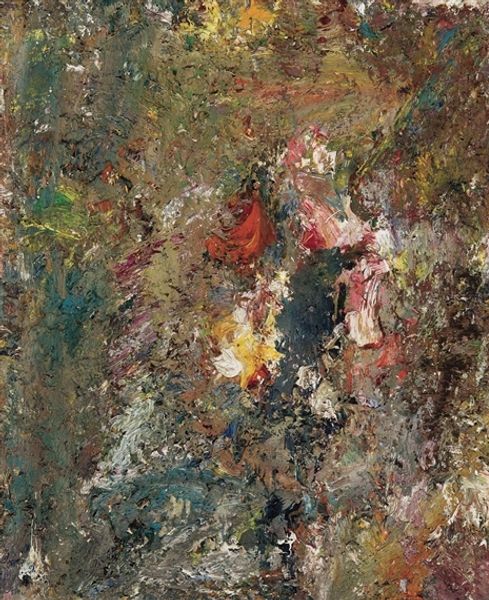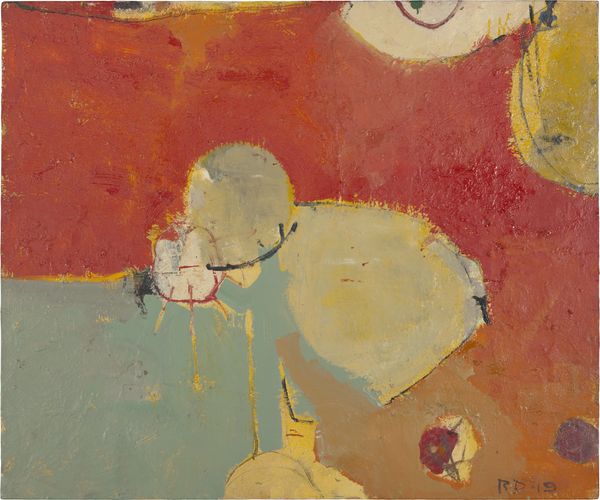
painting, oil-paint
#
organic
#
painting
#
oil-paint
#
landscape
#
symbolism
#
post-impressionism
Copyright: Public Domain: Artvee
Curator: This is "Nasturtiums," an oil painting created by Odilon Redon in 1905, placing it firmly within his Post-Impressionist and Symbolist phases. The texture created by the oil is really interesting. What are your initial impressions? Editor: It’s dreamlike. There's this vibrant, almost feverish energy to it with the interplay of orange and green hues against that salmon backdrop. It feels both inviting and unsettling, a bit like a memory struggling to surface. Curator: Indeed! The layering of paint gives it that ethereal quality. You know, Redon had a complicated relationship with the commercial art world. He initially worked primarily in black and white lithography to make a living, catering to a print market that valued reproducibility and graphic skill. Editor: And then he embraced color...Was this a conscious turning away from the social constraints that tethered him to printmaking as labor? Did he view oil painting as more emancipatory in some way? It seems relevant that so many women artists at the time took on the subject of flowers—an acceptable topic and sphere to work within. Was he somehow co-opting and reclaiming that female sphere? Curator: That's a compelling idea. Shifting to painting gave him more control over production, distribution and commodification. Think about the role of color here too: those striking oranges! The specific pigments he used, and their availability at the time, point to changes in industrial production and consumption. These shades weren't always accessible to artists. The art materials and supplies also hint at the rising middle class and their access to leisurely pursuits like gardening. Editor: Yes, these shades certainly convey emotions. But the choice to feature nasturtiums specifically isn’t arbitrary, either. Nasturtiums, symbolically, often represent patriotism or conquest. Knowing Redon’s involvement with symbolist circles who critiqued bourgeois society makes one wonder if his engagement with these symbolic forms and references becomes a statement on art's involvement in perpetuating national myths. Curator: That tension is visible, absolutely. There’s beauty, yes, but also something almost unsettling in the profusion of color and the almost claustrophobic density of the floral arrangement. I like the reading of the title "Nasturtiums" as an allusion to potentially problematic subject matter. Editor: Looking at the work again, I’m struck by how contemporary questions of ecology and sustainability—the very idea of "organic"—seem so profoundly embedded within a historical artwork like this. It’s a beautiful paradox. Curator: Absolutely. It shows how seemingly simple depictions of flowers can open up a dialogue about so much more than just aesthetic beauty.
Comments
No comments
Be the first to comment and join the conversation on the ultimate creative platform.
